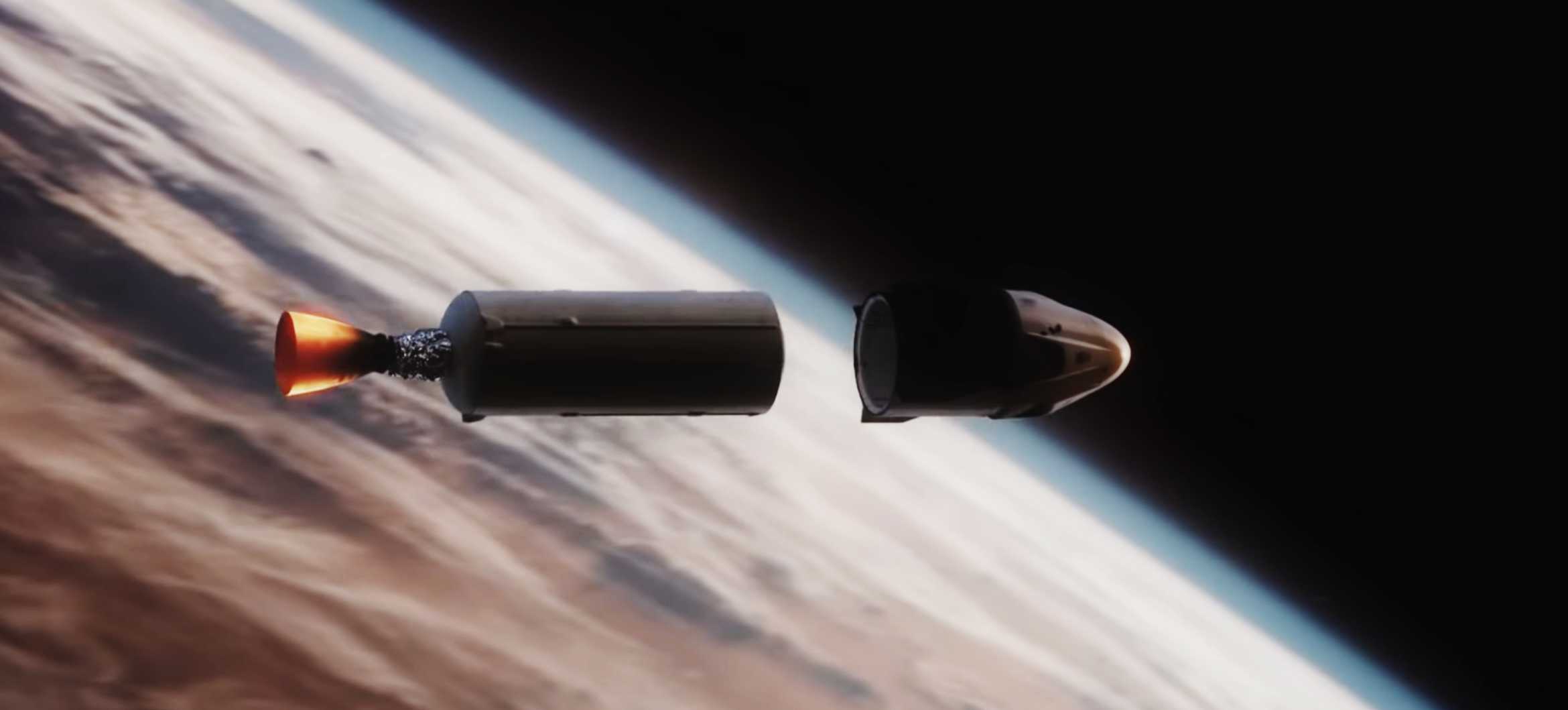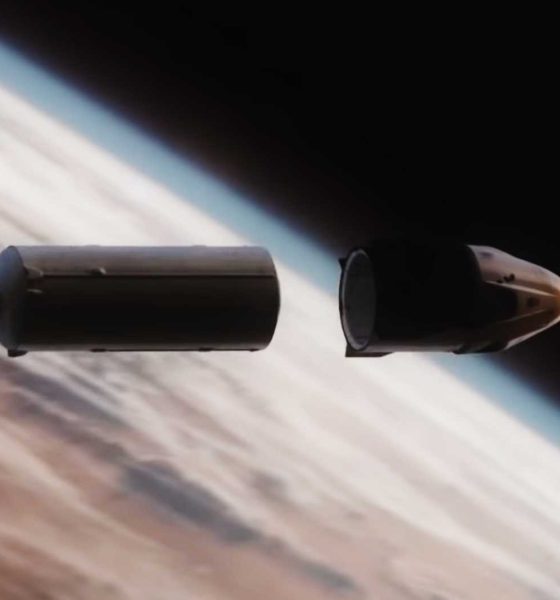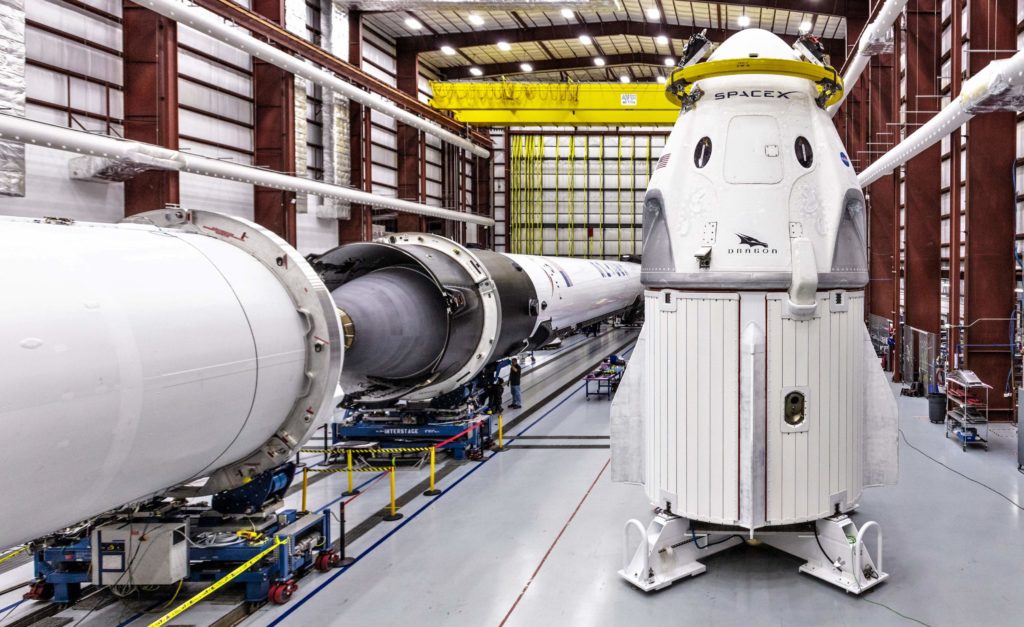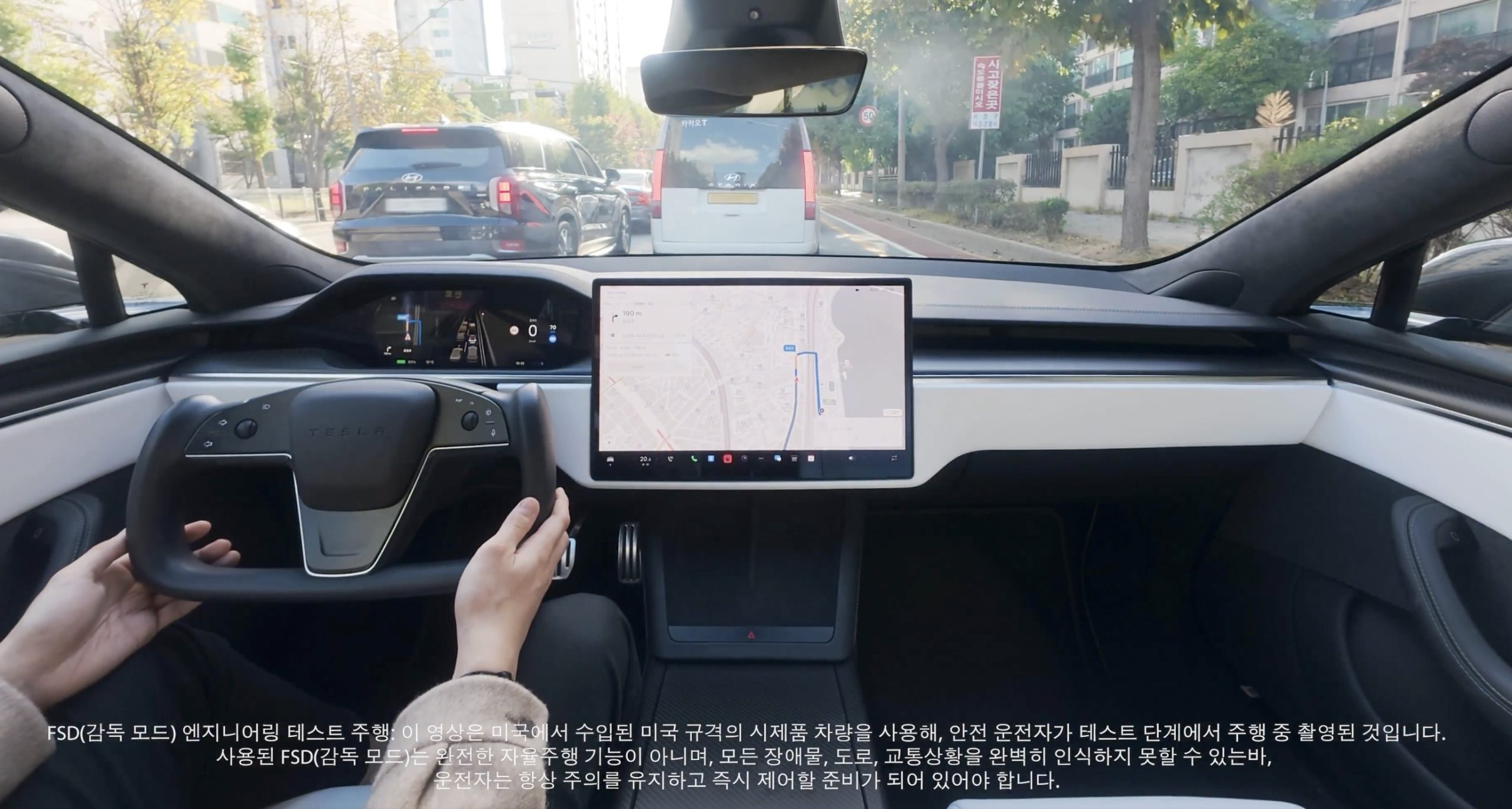

News
SpaceX rapidly tests, ships Falcon 9 second stage for next NASA astronaut launch
SpaceX has shipped, tested, and delivered the new Falcon 9 upper stage tasked with carrying the company’s next Crew Dragon astronauts to orbit as early as October 30th.
Offering rare insight into the kind of timelines and margins SpaceX operates on for even its most important missions, a Falcon upper stage bearing NASA’s ‘worm’ logo and ‘meatball’ insignia was spotted by a local resident and photographer on October 2nd. Thus far, the only SpaceX rockets that have flown with NASA iconography are those supporting Crew Dragon launches, making them a dead giveaway for Crew Dragon launch hardware.
After Demo-2, SpaceX’s May 2020 astronaut launch debut, the company moved those decals from Falcon 9’s booster – liable to fly any number of non-NASA missions later in life – to each NASA crew mission’s expendable Falcon second stage (S2). Since then, Crew-1 (November 2020) and Crew-2 (April 2021) have both launched with NASA logos on their second stages and Crew-3 now looks set to continue that tradition.
Thanks to the watchful eye of local resident turned SpaceX fan Reagan Beck, it was actually possible to identify Crew-3’s Falcon 9 upper stage as soon as it was spotted at the company’s McGregor, TX development and testing facilities on October 2nd. While there was technically a tiny chance that it could be for one of several upcoming NASA spacecraft launches or even for Crew Dragon’s April 2022 Crew-4 mission, the likeliest destination by far for the NASA-branded Falcon S2 was Crew-3.
Due partially to the fact that Falcon booster qualification testing typically takes McGregor at least two or so weeks but mainly to the seemingly razor-thin schedule margins it would imply, there was some understandable skepticism that the upper stage was bound to launch Crew-3 just four weeks after it was first spotted. Moreso, Crew Dragon typically rolls out to the launch pad on Falcon 9 at least 5-7 days before launch to allow extra time for an integrated static fire, final checkouts, and a ‘dry dress’ practice runs for each mission’s crew.
Further, even after completing static fire qualification testing in McGregor, Crew-3’s Falcon stage would still need to be packaged up, transported more than a thousand miles by road, carefully unpackaged at a SpaceX launch site or hangar, outfitted with a Merlin Vacuum nozzle extension, installed on the mission’s Falcon 9 booster, and mated to Crew Dragon itself before that pad rollout can occur. In other words, rather than Crew-3’s exact October 30th launch date, the mission’s upper stage would likely need to arrive at SpaceX’s Kennedy Space Center (KSC) Pad 39A launch facilities at least 9-10 days before launch.
Realistically, that means that from the moment the NASA-branded upper stage first spotted on a McGregor test stand, it had maybe two weeks to complete qualification testing and ship out to Pad 39A. With practically no context, that seemed like a stretch at the time – particularly for a single-engine Falcon second stage explicitly tasked with safely delivering four astronauts to orbit. In reality, McGregor’s Falcon S2 testing is apparently far faster than booster testing and the presumed Crew-3 stage seemingly passed qualification testing and vacated the test stand less than five days after it was installed.
In theory, that left the McGregor team about a week to complete post-test inspections, clean the interior of its propellant tanks, and prepare the stage for the last leg of its journey to Florida. SpaceX seemingly managed that without issue and a new Falcon upper stage potentially meant for Crew-3 was spotted in Florida just a few miles away from a SpaceX launch site on October 14th.
However, per additional photos and reports from Reagan, McGregor’s second stage test team has been incredibly busy over the last month or so. Prior to the Crew-3 stage’s arrival, another second stage completed qualification testing between September 21st and 28th. Crew-3’s S2 was installed on October 2nd and removed by the 7th. Wasting no time, another second stage was installed on the same stand on October 10th and apparently completed testing by the 13th – equivalent to a new upper stage qualified every week. Even if the Falcon stage that arrived at Cape Canaveral on October 14th isn’t Crew-3’s, then, Crew-3’s can’t be far behind.

Ultimately, SpaceX appears to be testing and shipping one of two integral Falcon 9 stages for a crucial, schedule-sensitive NASA astronaut launch with schedule margins measured in hours or single-digit days. That’s a far cry from competitors Arianespace and ULA and even NASA itself, which generally deliver flight hardware months in advance. Eleven years since Falcon 9’s launch debut, every Falcon second stage that has made it through stage separation – 127 of 127 – has successfully ignited its Merlin Vacuum engine one or several times and delivered its payload(s) to the correct orbit(s). Well over half of those successful launches were completed in the last three and a half years – and with the same Falcon 9 upper stage variant now routinely tasked with carrying astronauts to orbit.
In other words, delivering a NASA Crew mission’s Falcon second stage less than two weeks before the assembled rocket is scheduled to roll out to the launch pad may seem a tad reckless, it’s more likely that it’s evidence of SpaceX’s second stage build/test teams and facilities operating as an incredibly reliable, well-oiled machine.

News
Tesla Full Self-Driving lands in a new country, its 7th

Tesla Full Self-Driving has officially landed in a new country today, its seventh overall after it launched in both Australia and New Zealand earlier this year.
On Sunday, Tesla owners in South Korea reported that the company’s Full Self-Driving (Supervised) had started arriving in their vehicles. Owners reported that it was v14.1.4, which is not the latest version available in other countries, but is one of the most recent releases Tesla has deployed to drivers:
From 6 to 7
Tesla Full Self-Driving has launched in South Korea; the 7th country to have FSD https://t.co/X6gm1SyoxV
— TESLARATI (@Teslarati) November 23, 2025
This marks the seventh country in which Tesla has enabled its Full Self-Driving suite, following the United States and Puerto Rico, Canada, China, Mexico, Australia, and New Zealand.
Tesla launched Full Self-Driving most recently in Australia and New Zealand about three months ago. The expansion is a major breakthrough for the company as it aims to launch Full Self-Driving on a global scale.
However, the company’s biggest challenge thus far has been getting European regulatory agencies to handle the red tape that has inhibited Tesla from launching its semi-autonomous driving suite on the continent. Recently, it admitted that it sees a pathway through Dutch regulatory bodies, which seem to be the most willing to work with Tesla to get FSD in Europe.
Tesla Full Self-Driving appears to be heading to Europe soon
The company said that it has driven over 1 million kilometers safely on European roads across 17 different countries in internal testing. But its path to success will be by “partnering with the Dutch approval authority RDW to gain exemption for the feature. This involves proving compliance with existing regulations (UN-R-171 DCAS) + filing an exemption (EU Article 39) for yet-to-be-regulated behaviors like Level 2 systems off-highway, system-initiated lane changes with hands-off the wheel, etc.”
Perhaps the expansion into Europe will be the biggest challenge for Tesla, but it could also yield major results and advantages for the company moving forward. Tesla said it hopes to have FSD available in Europe sometime early next year.
For now, the expansion in South Korea is the latest win for Tesla and its self-driving efforts. In the U.S., it now turns its focus toward fully autonomous operation, as it works with state agencies to launch Robotaxi outside of Texas, California, and most recently, Arizona.
Elon Musk
Tesla CEO Elon Musk teases insane capabilities of next major FSD update

Tesla CEO Elon Musk teased the insane capabilities of the next major Full Self-Driving update just hours after the company rolled out version 14.2 to owners.
Tesla Full Self-Driving v14.2 had some major improvements from the previous iteration of v14.1.x. We were on v14.1.7, the most advanced configuration of the v14.1 family, before Tesla transitioned us and others to v14.2.
However, Musk has said that the improvements coming in the next major update, which will be v14.3, will be where “the last big piece of the puzzle finally lands.”
14.3 is where the last big piece of the puzzle finally lands
— Elon Musk (@elonmusk) November 21, 2025
There were some major improvements with v14.2, most notably, Tesla seemed to narrow in on the triggers that caused issues with hesitation and brake stabbing in v14.1.x.
One of the most discussed issues with the past rollout was that of brake stabbing, where the vehicle would contemplate proceeding with a route as traffic was coming from other directions.
We experienced it most frequently at intersections, especially four-way stop signs.
Elon Musk hints at when Tesla can fix this FSD complaint with v14
In our review of it yesterday, it was evident that this issue had been resolved, at least to the extent that we had no issues with it in a 62-minute drive, which you can watch here.
Some owners also reported a more relaxed driver monitoring system, which is something Tesla said it was working on as it hopes to allow drivers to text during operation in the coming months. We did not test this, as laws in Pennsylvania prohibit the use of phones at any time due to the new Paul Miller’s Law, which took effect earlier this year.
However, the improvements indicate that Tesla is certainly headed toward a much more sentient FSD experience, so much so that Musk’s language seems to be more indicative of a more relaxed experience in terms of overall supervision from the driver, especially with v14.3.
Musk did not release or discuss a definitive timeline for the release of v14.3, especially as v14.2 just rolled out to Early Access Program (EAP) members yesterday. However, v14.1 rolled out to Tesla owners just a few weeks ago in late 2025. There is the potential that v14.3 could be part of the coming Holiday Update, or potentially in a release of its own before the New Year.
News
Tesla Full Self-Driving v14.2 – Full Review, the Good and the Bad

Tesla rolled out Full Self-Driving version 14.2 yesterday to members of the Early Access Program (EAP). Expectations were high, and Tesla surely delivered.
With the rollout of Tesla FSD v14.2, there were major benchmarks for improvement from the v14.1 suite, which spanned across seven improvements. Our final experience with v14.1 was with v14.1.7, and to be honest, things were good, but it felt like there were a handful of regressions from previous iterations.
While there were improvements in brake stabbing and hesitation, we did experience a few small interventions related to navigation and just overall performance. It was nothing major; there were no critical takeovers that required any major publicity, as they were more or less subjective things that I was not particularly comfortable with. Other drivers might have been more relaxed.
With v14.2 hitting our cars yesterday, there were a handful of things we truly noticed in terms of improvement, most notably the lack of brake stabbing and hesitation, a major complaint with v14.1.x.
However, in a 62-minute drive that was fully recorded, there were a lot of positives, and only one true complaint, which was something we haven’t had issues with in the past.
The Good
Lack of Brake Stabbing and Hesitation
Perhaps the most notable and publicized issue with v14.1.x was the presence of brake stabbing and hesitation. Arriving at intersections was particularly nerve-racking on the previous version simply because of this. At four-way stops, the car would not be assertive enough to take its turn, especially when other vehicles at the same intersection would inch forward or start to move.
This was a major problem.
However, there were no instances of this yesterday on our lengthy drive. It was much more assertive when arriving at these types of scenarios, but was also more patient when FSD knew it was not the car’s turn to proceed.
Can report on v14.2 today there were ZERO instances of break stabbing or hesitation at intersections today
It was a significant improvement from v14.1.x
— TESLARATI (@Teslarati) November 21, 2025
This improvement was the most noticeable throughout the drive, along with fixes in overall smoothness.
Speed Profiles Seem to Be More Reasonable
There were a handful of FSD v14 users who felt as if the loss of a Max Speed setting was a negative. However, these complaints will, in our opinion, begin to subside, especially as things have seemed to be refined quite nicely with v14.2.
Freeway driving is where this is especially noticeable. If it’s traveling too slow, just switch to a faster profile. If it’s too fast, switch to a slower profile. However, the speeds seem to be much more defined with each Speed Profile, which is something that I really find to be a huge advantage. Previously, you could tell the difference in speeds, but not in driving styles. At times, Standard felt a lot like Hurry. Now, you can clearly tell the difference between the two.
It seems as if Tesla made a goal that drivers should be able to tell which Speed Profile is active if it was not shown on the screen. With v14.1.x, this was not necessarily something that could be done. With v14.2, if someone tested me on which Speed Profile was being used, I’m fairly certain I could pick each one.
Better Overall Operation
I felt, at times, especially with v14.1.7, there were some jerky movements. Nothing that was super alarming, but there were times when things just felt a little more finicky than others.
v14.2 feels much smoother overall, with really great decision-making, lane changes that feel second nature, and a great speed of travel. It was a very comfortable ride.
The Bad
Parking
It feels as if there was a slight regression in parking quality, as both times v14.2 pulled into parking spots, I would have felt compelled to adjust manually if I were staying at my destinations. For the sake of testing, at my first destination, I arrived, allowed the car to park, and then left. At the tail-end of testing, I walked inside the store that FSD v14.2 drove me to, so I had to adjust the parking manually.
This was pretty disappointing. Apart from parking at Superchargers, which is always flawless, parking performance is something that needs some attention. The release notes for v14.2. state that parking spot selection and parking quality will improve with future versions.
Any issues with parking on your end? 14.1.7 didn’t have this trouble with parking pic.twitter.com/JPLRO2obUj
— TESLARATI (@Teslarati) November 21, 2025
However, this was truly my only complaint about v14.2.
You can check out our full 62-minute ride-along below:








